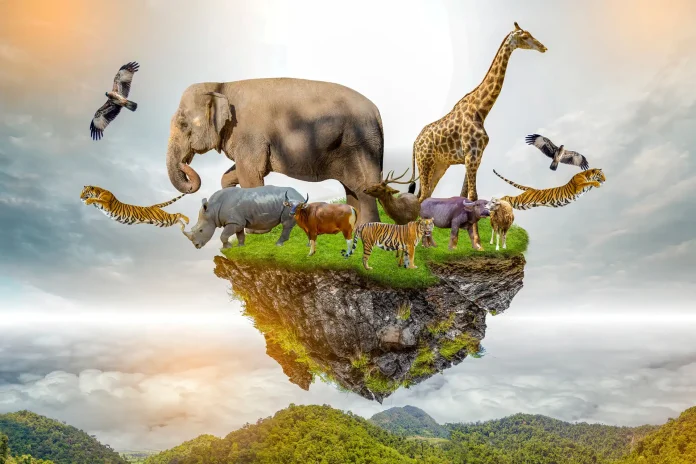Every year on March 3rd, the world unites to celebrate UN World Wildlife Day 2024, honoring the incredible variety of life on Earth and recognizing its vital role in maintaining our planet’s ecological balance. This year, the theme, “Connecting People and Planet: Exploring Digital Innovation in Wildlife Conservation,” emphasized the growing importance of technology in addressing current conservation challenges.
Technology’s Role In Conservation
Recent technological advancements have crucially impacted various aspects of our lives, and conservation efforts are no exception. Tools like satellite imaging, drones, data analytics, and artificial intelligence (AI) have become increasingly enhanced, providing invaluable insights into ecosystems and wildlife behavior. This has improved our understanding of ecological processes and empowered conservationists with more effective strategies for protecting endangered species and their habitats.
Engaging the Community in World Wildlife Day 2024
One of the most promising applications of technology lies in using digital platforms for community engagement and education. Conservation organizations can connect with a global audience through social media, mobile apps, and online forums, raising awareness about environmental issues and mobilizing support for conservation initiatives. This facilitates a sense of collective responsibility, inspiring individuals to take action in their communities and contribute to a better future.
Combating the illegal wildlife trade
Digital tools also play a crucial role in combating the illegal wildlife trade, an essential threat to many endangered species. By employing blockchain technology and geospatial tracking systems, authorities can more accurately trace the origins of wildlife products and identify illegal trade routes. Additionally, machine learning algorithms can analyze vast amounts of data to detect patterns of unlawful activity, enabling law enforcement agencies to intervene more effectively and disrupt criminal networks.
Also check: New Species of Anaconda Discovered in the Amazon
The emergence of citizen science initiatives is another exciting development in digital innovation for wildlife conservation. These initiatives engage volunteers in collecting and analyzing environmental data. Through smartphone apps and online platforms, individuals can contribute valuable information about wildlife sightings, habitat conditions, and biodiversity trends, significantly supplementing the work of professional researchers. Citizen science expands the scope of data collection and promotes public participation in conservation efforts, empowering individuals to become active stewards of their environment.
Real-time Monitoring For Responsive Action
Digital technologies also facilitate real-time monitoring of wildlife populations, enabling more responsive conservation interventions. For example, researchers use GPS collars and sensor-equipped cameras to track animal movements and assess their health status in real time. This data allows for the timely identification and reduction of emerging threats, such as habitat loss or illegal activity, ensuring a more dynamic and adaptive approach to conservation management.
Challenges and opportunities
While digital innovation holds great potential for advancing wildlife conservation, some challenges must be addressed. The primary concern is the “digital divide,” referring to the uneven access to technology among different communities and regions. In many rural or remote areas, limited internet connectivity and inadequate technological infrastructure stop the adoption of digital tools for conservation purposes. Closing this gap is essential, requiring concerted efforts to expand access to technology, provide training, and support communities, ensuring everyone can participate in conservation efforts.
Also check: Myth of Megalodon Real Life Extinction Revealed
Another challenge is the rapid pace of technological development, which raises concerns about data privacy and security. As conservation organizations collect and analyze increasing amounts of data, safeguards must be implemented to protect sensitive information and adhere to ethical data management practices. Collaboration between technologists, policymakers, and conservationists is essential to develop solid frameworks for data governance and ensure responsible and ethical use of digital innovations in wildlife conservation.
Path Towards The Future
Despite these challenges, the opportunities presented by digital innovation in wildlife conservation are vast and complex. By utilizing the power of technology, we can:
Enhance our understanding of ecological systems: From remote sensing and predictive modeling to community-based monitoring, digital tools offer valuable insights into the natural world.
Engage citizens in conservation action: Digital platforms facilitate community engagement and public participation, promoting a shared responsibility for protecting our planet.
Implement more effective conservation strategies: Real-time data collection and analysis enable more responsive and adaptive conservation interventions, allowing us to address threats and protect wildlife more effectively.
Also check: New Drug LOY 001 Could Help Increasing Dog Lifespans.
This year’s UN World Wildlife Day 2024 is a powerful reminder that by embracing digital innovation and promoting collaboration across disciplines and sectors, we can overcome challenges, create a more sustainable future, and ensure a world where humans and wildlife thrive in harmony. Let us embark on this journey together, guided by principles of innovation, partnership, and respect for all life on Earth.



